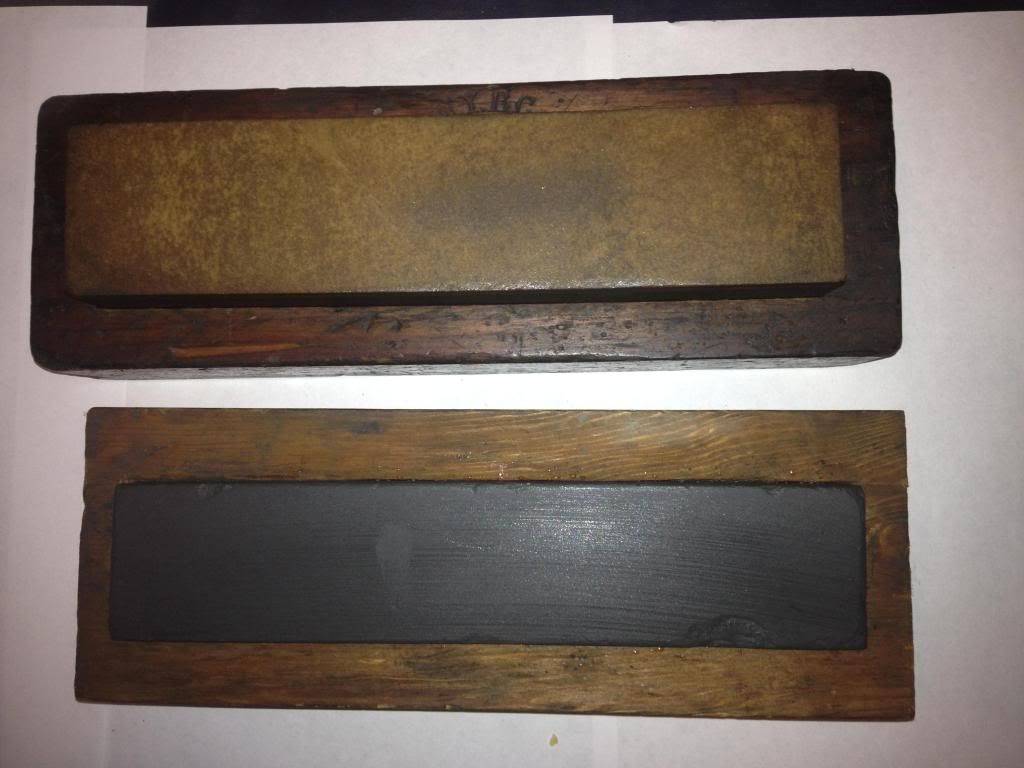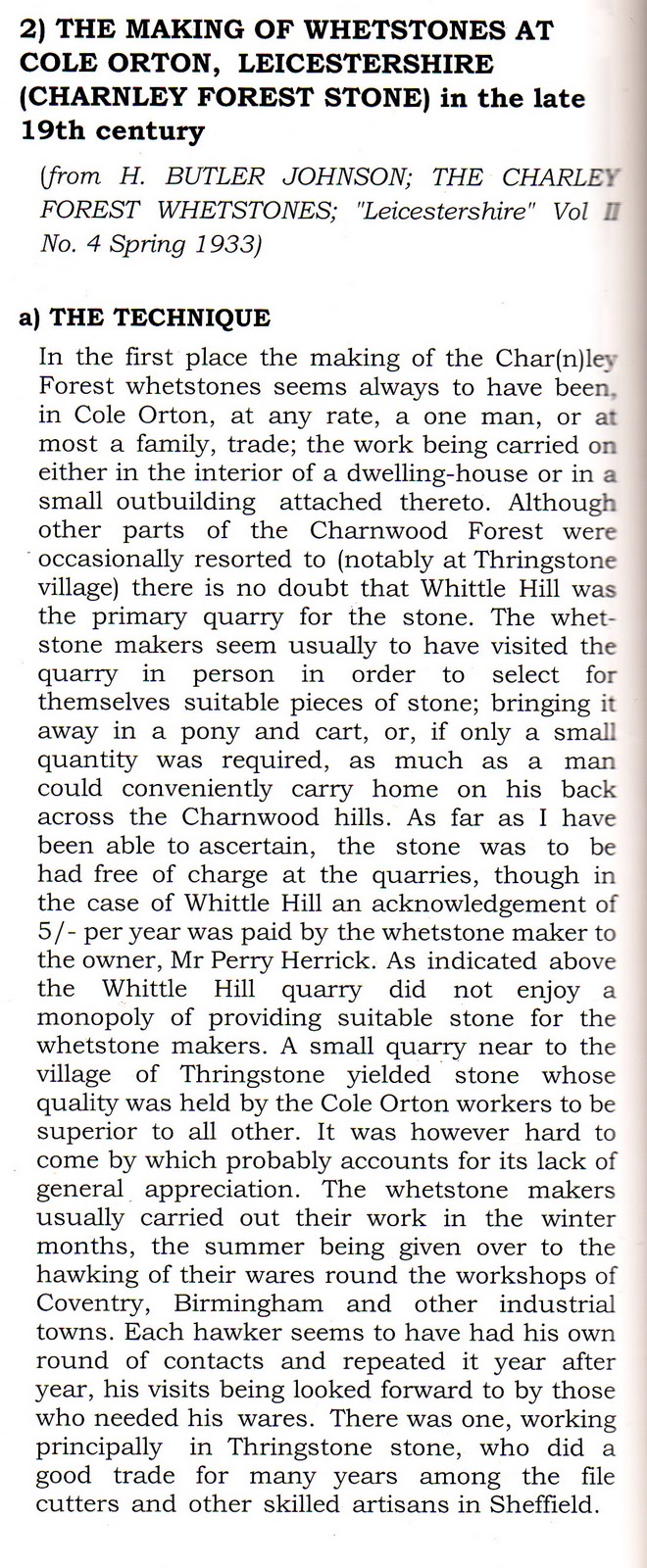Here are a couple more odd ducks, and slightly larger & longer ones at that. The one on top I call the "Brindle Stone" and is in a wooden box labeled "NYB Co." which my research indicates was the New York Boiler Co. Ever wonder how all the houses in New York got heated in the winter before heating oil? Lots of wood and coal; one could see the necessity of sharpening a lot of axes and possibly other edge tools in such a setting. I've seen a stone like this characterized on ebay as a "Turkey Stone," but my suspicion is that the seller called it that more because it resembles the mottled brown and dark brown of a turkey feather than its ultimate origin. So-called "Turkey Stones" were, according to my research, actually quarried in Crete. They are supposedly gray, often with white veins, and could be used with oil or water. At one time they were held in very high regard by the craftsmen and barbers of Europe. I don't think the "Brindle Stone" is an example of the fabled "Turkey Stone."
David Weaver has seen this stone and supposed it was a soft Arkansas of some variety, and as I started to flatten it, it gave off a sort of fine, sedimentary slurry reminiscent of the silica in Arkansas stones. But it's exceedingly hard; the flattening process was tedious in the extreme, so I got it "mostly there" in hopes of finishing the job later. The surface I was able to grade down is glassy and unusually fine.
The second stone has an oleaginous, slate-y feel to it, like oil shale. If the edges weren't so straight I'd suppose it had been made by just some guy somewhere from a local quarry like some stones you see with unfinished bottoms. Haven't given this one much use yet, and had speculated that it was some chip of slate brought over by a Welshman. David has also seen this one and may have something to say about it. As I recall, he'd thought it was sufficient as an intermediary stone.







 Reply With Quote
Reply With Quote




